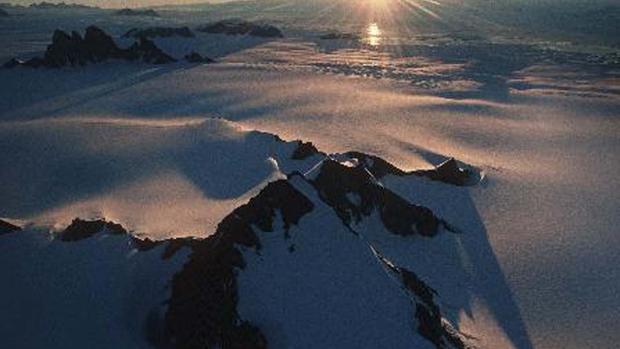Subglacial Lake Vostok may be thriving environment
Researchers have discovered more than 3,500 distinct life forms in an Antarctic lake that was previously considered inhospitable.
Buried beneath 3,700m -- more than two miles -- of ice, Lake Vostok is the largest subglacial lake on Earth. Overall, it ranks seventh in volume and is the fourth deepest. Scientists have long believed the lake's environment, a combination of extreme cold, extreme heat (possibly from hydrothermal vents), pressure from the glacial ice and darkness, would preclude life forms from surviving in the area. But now an analysis of four sections of ice core, extracted from Lake Vostok's southern main basin and southwestern end, are telling another story.
Led by Yury M. Shtarkman and Zeynep A. Kocer, the Bowling Green State University research team collected 3,507 RNA and DNA sequences, cell fragments and viruses. Using taxonomy, they were able to identify the genus or species of 1,623 of the sequences.
"The compilation of results suggests that organisms are living and reproducing in Lake Vostok," they wrote in the resulting study, published in the open source journal PLoS ONE on July 3.
About 94 percent of the sequences belong to bacteria, while the remaining six percent eurkaya, a class of complex organisms that includes fungi. Two sequences were from archaea, a type of single-celled microorganism. Most of the organisms identified are typically found in lakes, brackish water, marine environments, soil, deep-sea sediments, deep-sea thermal vents, animals and plants, according to the research team. In other words, they thrive in a wide variety of environments, ranging from fresh to salt water, low to high light, and abundant to sparse oxygen supply.
The species of bacteria indicate that Lake Vostok may have once been teeming with fish. The specimens pulled from the southwestern edge closely resembled those typically found in lobster gut bacterium and fish pathogens.
"Additional indications of animals in the lake came from the presence of several sequences from members of the Enterobacteriaceae," wrote the researchers. "These included sequences of several strains/species of E. coli, Erwinia, Klebsiella, Salmonella, and Shigella, all of which are found in the digestive systems of fish and other aquatic and marine animals."
One potential explanation for the large number of species is that these are the remains of long-dead organisms.
"Some nucleic acids can be detected and sequenced more than 100 million years after the organisms containing them have perished," they wrote. The organisms may have been deposited long before glacial ice took over the region. But they added that RNA is less stable than DNA. And since most of the sequences comprised RNA, they are most likely from organisms that are currently living in Lake Vostok. Many may have first arrived in the lake some 15-30 million years ago and continued to adapt as the conditions morphed into the current subglacial state.

